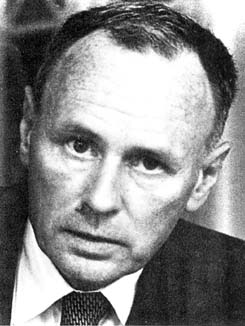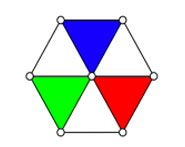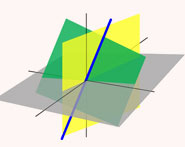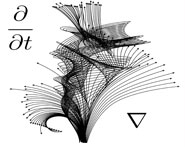


 تاريخ الرياضيات
تاريخ الرياضيات
 الرياضيات في الحضارات المختلفة
الرياضيات في الحضارات المختلفة 
 الرياضيات المتقطعة
الرياضيات المتقطعة
 الجبر
الجبر
 الهندسة
الهندسة 
 المعادلات التفاضلية و التكاملية
المعادلات التفاضلية و التكاملية 
 التحليل
التحليل
 علماء الرياضيات
علماء الرياضيات |
Read More
Date: 25-10-2017
Date: 14-11-2017
Date: 3-11-2017
|
Died: 15 October 1990

Wilhelm Magnus attended the University of Frankfurt receiving his doctorate from that university in 1931. His doctorate was supervised by Dehn who asked Magnus various questions about one-relator groups in 1928. Magnus was able to answer these questions and published his results on one-relator groups in 1930. In 1932 he published a major result in combinatorial group theory when he proved that the word problem for one-relator groups is soluble.
Magnus was appointed to the staff in Frankfurt serving from 1933 until 1938. During this time he spent the session 1934/35 at Princeton University in the United States. During this period Magnus introduced Lie ring methods to study the lower central series of free groups. He studied the automorphism groups of free groups in 1934.
In 1935 Magnus gave examples of finitely presented groups which were isomorphic to proper factor groups of themselves. Hopf had originally asked whether such groups exist and, although Jakob Nielsen had shown that free groups of finite rank have this property ten years before Hopf asked the question, nobody - including Jakob Nielsen himself - noticed the question had already been answered.
However Magnus's career was to hit problems when he refused to join the Nazi Party and, as a consequence of this, was not allowed to hold an academic post during World War II. Instead he had to work in industry. In 1947 he was offered a professorship at the University of Göttingen but he was not to remain there for long.
In 1946 Bateman died and Whittaker was asked to recommend someone who could undertake the project of organising and publishing Bateman's manuscripts. Whittaker's advice was that Erdélyi should lead the project and, in 1947, Erdélyi went to the California Institute of Technology. The project was a major one and other collaborators were needed. Magnus left Göttingen to join the Bateman project in 1948. He collaborated on the production of three volumes of Higher Transcendental Functions and two volumes of Tables of Integral Transforms.
In 1950 Magnus went to the Courant Institute of Mathematical Sciences. He spent 23 years there before moving to a chair at the Polytechnic Institute of New York in 1973. He held this post for five years before retiring.
In [2] Magnus's research is described in these terms:-
Magnus's mathematical expertise was exceptionally wide ranging. In addition to research in group theory and special functions, he worked on problems in mathematical physics, including electromagnetic theory and applications of the wave equation.
It was not only in the breadth and depth of research that Magnus excelled. He was also one of the best supervisors of doctoral students, supervising 61 doctoral students during his career. His teaching is described in [2] as 'outstanding' and this is confirmed by his receipt of the Great Teacher Award of New York University in 1969.
His nine books cover a wide range of mathematical topics such as elliptic functions, tessellations (Noneuclidean tessellations and their groups (1974) ), combinatorial group theory (a major work Combinatorial group theory (1966) written jointly with A Karrass and D Solitar) and mathematical physics. He was awarded a number of honours including a Rockefeller Fellowship in 1934, a Guggenheim Fellowship in 1969 and Fulbright-Hays Senior Research Scholarship in 1973/74.
Articles:



|
|
|
|
التوتر والسرطان.. علماء يحذرون من "صلة خطيرة"
|
|
|
|
|
|
|
مرآة السيارة: مدى دقة عكسها للصورة الصحيحة
|
|
|
|
|
|
|
نحو شراكة وطنية متكاملة.. الأمين العام للعتبة الحسينية يبحث مع وكيل وزارة الخارجية آفاق التعاون المؤسسي
|
|
|